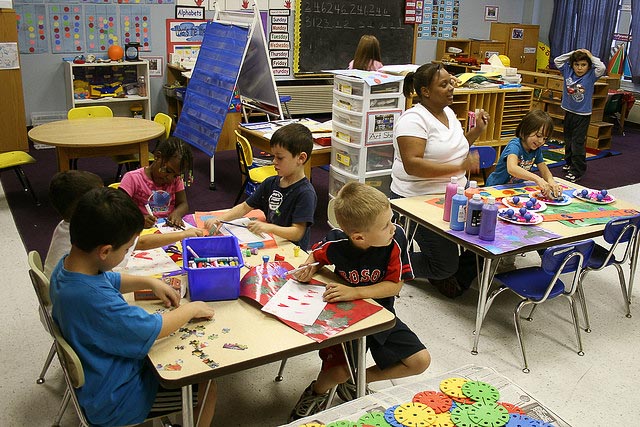More than a third of students in the Houston Independent School District are not fluent in English. The best way to help them learn that language involves teaching them in their native tongue.
That might seem counterintuitive to some, but it turns out native Spanish speakers have more success learning English when instructors continue to teach them Spanish as well.
The findings are the result of a study by the Houston Education Research Consortium, a research partnership between HISD and the Kinder Institute for Urban Research at Rice University. It marks one of the first independent studies of HISD’s two-way dual language program, which has garnered national attention. It’s also the first study of the program that tracked students’ results over time.
Students who aren’t fluent in English are labeled English Language Learners, or ELLs. HISD offers four different options for students who fall into that category.
Parents of ELLs may forego any type of bilingual education for their children and simply place them in the same classes as English-speaking students in hopes that they’ll pick up on the language.
They can enroll their ELL children in a short-term, transitional program. The program initially provides instruction in both languages but is primarily designed to move students from being Spanish speakers to being English speakers as quickly as possible.
A third option is a “one-way” dual language program that exclusively focuses on Spanish-native speakers but includes instruction in both Spanish and English. The goal is to produce students who are fluent in both languages.
Lastly, there are “two-way” dual language programs that include both native Spanish speakers and native English speakers in the classroom. Instruction occurs in both languages. By the time they complete the program, both types of students are expected to be fluent in both languages.
The study found that, of the four options, ELLs in the two-way dual language program had the best Spanish as well as English skills. Sandra Alvear, a Rice University graduate student studying sociology, conducted the analysis of the programs.
The findings suggest HISD should continue with its efforts to expand its dual language programs, said Ruth N. López Turley, director of HERC and associate director of the Kinder Institute for Urban Research.
Turley said the results shouldn’t come as a surprise, since linguists know nurturing a student in one language can help him or her better understand another language.
Turley said some parents of native Spanish speakers might mistakenly believe they’ll learn English more quickly if they’re totally immersed in English. “But that’s not true, according to our study,” Turley said.
Two-way dual language programs are popular with parents of native English speakers since younger children can more easily learn languages than older students. “Parents should know if you want your kid to know something besides English, the best time to do it is when they’re little, not high school,” Turley said.
But the results also suggest that native Spanish speakers likely benefit from their exposure to native English speakers in the two-way programs. The one-way and two-way programs have similar curricula, Turley said, but the primary difference is the mix of students.
Researchers came to their conclusions by tracking test results of a cohort of ELL students who started kindergarten in 2007. They examined how those students performed on Spanish language reading tests as well as English tests.
Across all three of the bilingual programs, ELL students improved their Spanish reading skills over time. Those in the two-way dual language programs, however, had the highest Spanish scores.
The study found that ELLs who stay in a bilingual program for at least four years – regardless of program – had the highest English reading scores. Those in the two-way dual language programs consistently had the highest English performance.
Though the study clearly shows two-way, dual-language programs are the most effective, they face a big hurdle: they’re also the most expensive type of bilingual program. “They’re harder to staff,” Turley said. “You need to have fully bilingual teachers. You need to have fully bilingual materials. Everything costs more.”
HISD offers a Spanish language dual language program at 31 of its 287 campuses. Earlier this year, it announced it would expand the program to an additional 21 campuses for the 2015-2016 school year.
Turley said the programs appear to be worth the investment. “From the district’s perspective, I’d want to keep expanding these programs, despite the expense, because you’re getting results.”

